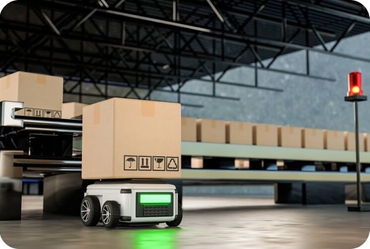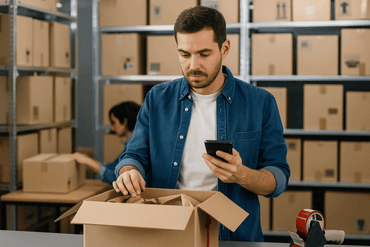
How Do Businesses Stay Competitive in International Logistics?
An always changing and fast-paced sector is international logistics. Businesses that want to remain competitive have to change with the times, welcome innovation, and always pay constant attention on raising customer happiness and efficiency. These are basic tactics businesses apply to keep leaders in their area.
1. Embrace Technology
Staying competitive in international logistics often hinges on adopting the latest technologies. These tools help companies enhance their operations and stay ahead of the curve:
- Real-Time Tracking: Advanced tracking systems provide live updates, improving transparency and trust with customers.
- Automation: Automated systems in warehousing and shipping reduce human errors and accelerate processes.
- Artificial Intelligence (AI): AI-driven tools predict demand, optimize routes, and streamline decision-making processes.
By leveraging these technologies, businesses can improve their efficiency and offer better service to customers.
2. Prioritize Sustainability
With global focus shifting toward environmental responsibility, adopting sustainable practices has become essential. Businesses can:
- Switch to Eco-Friendly Transport: Use electric or hybrid vehicles to reduce emissions.
- Implement Green Warehousing: Optimize energy use with solar panels and energy-efficient lighting.
- Adopt Sustainable Packaging: Transition to recyclable or biodegradable materials.
Sustainability is not only beneficial for the planet but also resonates with environmentally conscious consumers.
3. Develop Resilient Supply Chains
Disruptions like natural disasters or geopolitical events can heavily impact logistics. Businesses must build resilience by:
- Diversifying Suppliers: Avoid relying on a single source to minimize risks.
- Stockpiling Critical Goods: Maintain safety stocks for essential items.
- Scenario Planning: Prepare for potential disruptions with actionable contingency plans.
Resilient supply chains ensure stability even during unpredictable times.
4. Enhance Customer Experience
Satisfied customers are key to a successful logistics operation. Companies can enhance their customer experience by:
- Offering Flexible Delivery Options: Allow customers to choose between express and economy shipping.
- Providing Accurate Delivery Estimates: Use advanced tools to set realistic expectations.
- Simplifying Returns: Create straightforward and user-friendly return processes. For tailored solutions to simplify your shipping needs, explore Boxit4me.
A focus on customer satisfaction builds loyalty and strengthens brand reputation.
5. Optimize Costs Without Sacrificing Quality
Cost optimization is crucial for staying competitive in a price-sensitive market. Effective methods include:
- Consolidating Shipments: Combine multiple orders to reduce shipping expenses.
- Using Regional Warehousing: Reduce transportation costs by storing goods closer to end markets.
- Negotiating Freight Rates: Build strong relationships with carriers to secure favorable rates.
Balancing cost efficiency with high service standards ensures long-term profitability.
6. Stay Informed About Regulations
Compliance with international trade laws is non-negotiable. Businesses can:
- Monitor Regulatory Changes: Keep up with evolving trade agreements and tariffs.
- Streamline Documentation: Use digital tools to handle customs paperwork efficiently.
- Engage Experts: Work with customs brokers to navigate complex regulations.
Staying compliant helps avoid delays and fines while fostering smooth global operations.
7. Invest in Workforce Development
A skilled and motivated workforce is the backbone of any logistics operation. Companies should:
- Offer Regular Training: Equip employees with the latest industry knowledge and tools.
- Promote Cross-Functional Collaboration: Encourage communication across departments to improve workflows.
- Create Incentives: Reward performance to keep employees engaged and productive.
Well-trained teams are better equipped to handle challenges and drive innovation.
8. Leverage Data for Decision Making
Data analytics is a powerful tool for refining logistics strategies. Businesses can:
- Analyze Customer Behavior: Tailor services based on purchasing patterns.
- Identify Inefficiencies: Use data to improve processes and reduce costs.
- Forecast Trends: Prepare for future demands with predictive analytics.
Data-driven decisions enable businesses to operate more effectively and adapt to changes swiftly.
Related Articles


